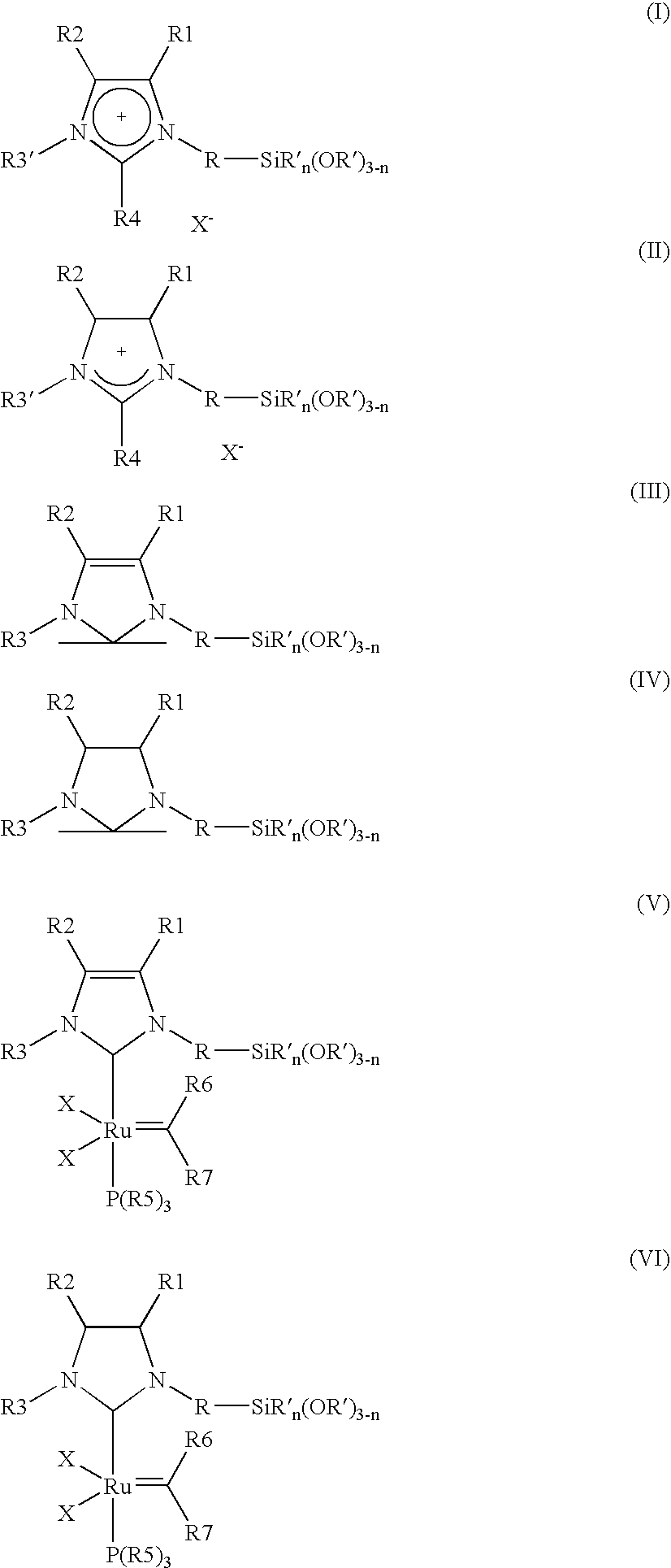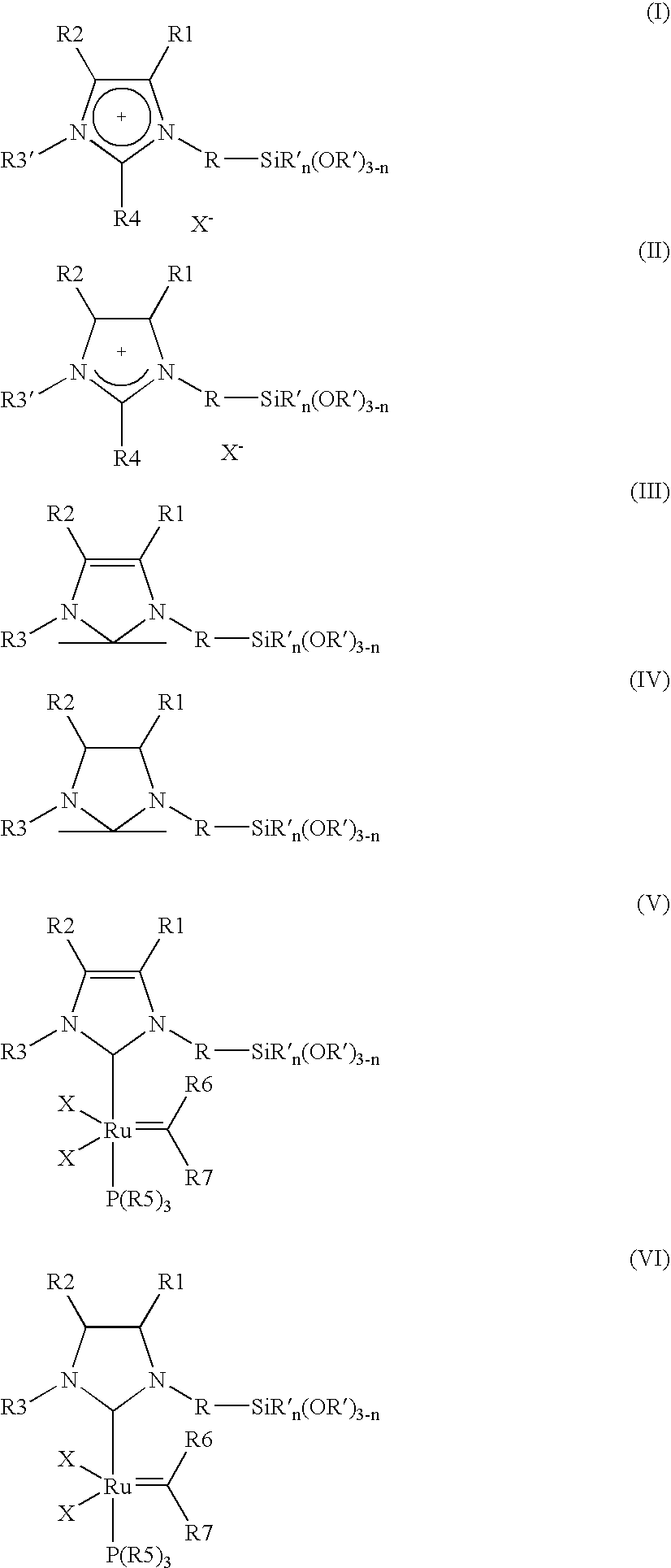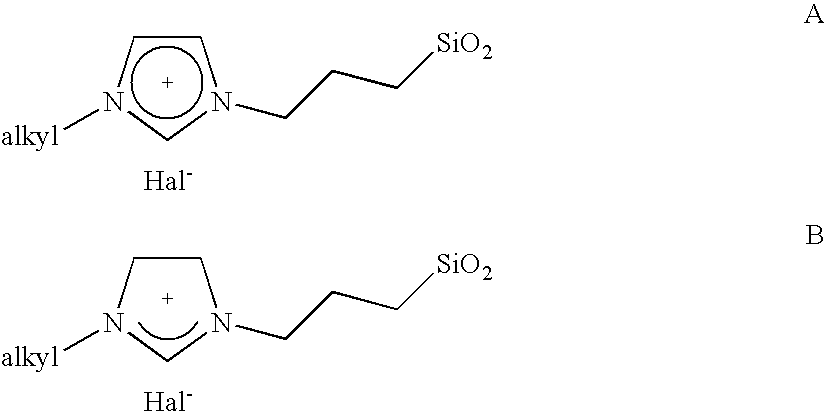Immobilised imidazoles and ruthenium catalysts
a technology of ruthenium catalysts and imidazoles, which is applied in the direction of organic compound/hydride/coordination complex catalysts, physical/chemical process catalysts, ruthenium organic compounds, etc., can solve the problems of reducing the catalyst activity in an unforeseeable manner, compounds described cannot be used as homogeneous catalysts, and compounds are unsuitable for use with respect to a and b as ligand precursors, etc., to achieve no leaching and high thermal stability
- Summary
- Abstract
- Description
- Claims
- Application Information
AI Technical Summary
Benefits of technology
Problems solved by technology
Method used
Image
Examples
Embodiment Construction
[0008] The object is achieved by a process for the immobilisation of the compounds of the general formulae (I-VI)
in which [0009] R is A, Ar, A—Ar, A—Ar—A, Het, AHet or AHetA having a total of not more than 30 carbon atoms, where [0010] A is a straight-chain, branched or saturated C1-C20-alkyl radical, cycloalkyl or cycloalkyl bonded via one or two alkyl group(s) having a total of 4-30 carbon atoms, where one CH2 or CH group both in the alkyl radical and in the cycloalkyl radical may be replaced by N, NH, NA, O and / or S and H atoms may be replaced by OA, NA2 and / or PA2, [0011] Ar is a mono- or polysubstituted or unsubstituted aromatic hydrocarbon having a total of not more than 20 carbon atoms, where substituents may be A, Hal, OA, NA2, PA2, COOA, COA, CN, CONHA, NO2, ═NH or ═O, [0012] Het is a monocyclic or bicyclic, saturated or aromatic heterocyclic radical having from 1 to 4 N, O and / or S atoms, which may be unsubstituted or mono-, di- or trisubstituted by Hal and / or A, OA, CO...
PUM
| Property | Measurement | Unit |
|---|---|---|
| temperature | aaaaa | aaaaa |
| temperature | aaaaa | aaaaa |
| temperature | aaaaa | aaaaa |
Abstract
Description
Claims
Application Information
 Login to View More
Login to View More - R&D
- Intellectual Property
- Life Sciences
- Materials
- Tech Scout
- Unparalleled Data Quality
- Higher Quality Content
- 60% Fewer Hallucinations
Browse by: Latest US Patents, China's latest patents, Technical Efficacy Thesaurus, Application Domain, Technology Topic, Popular Technical Reports.
© 2025 PatSnap. All rights reserved.Legal|Privacy policy|Modern Slavery Act Transparency Statement|Sitemap|About US| Contact US: help@patsnap.com



